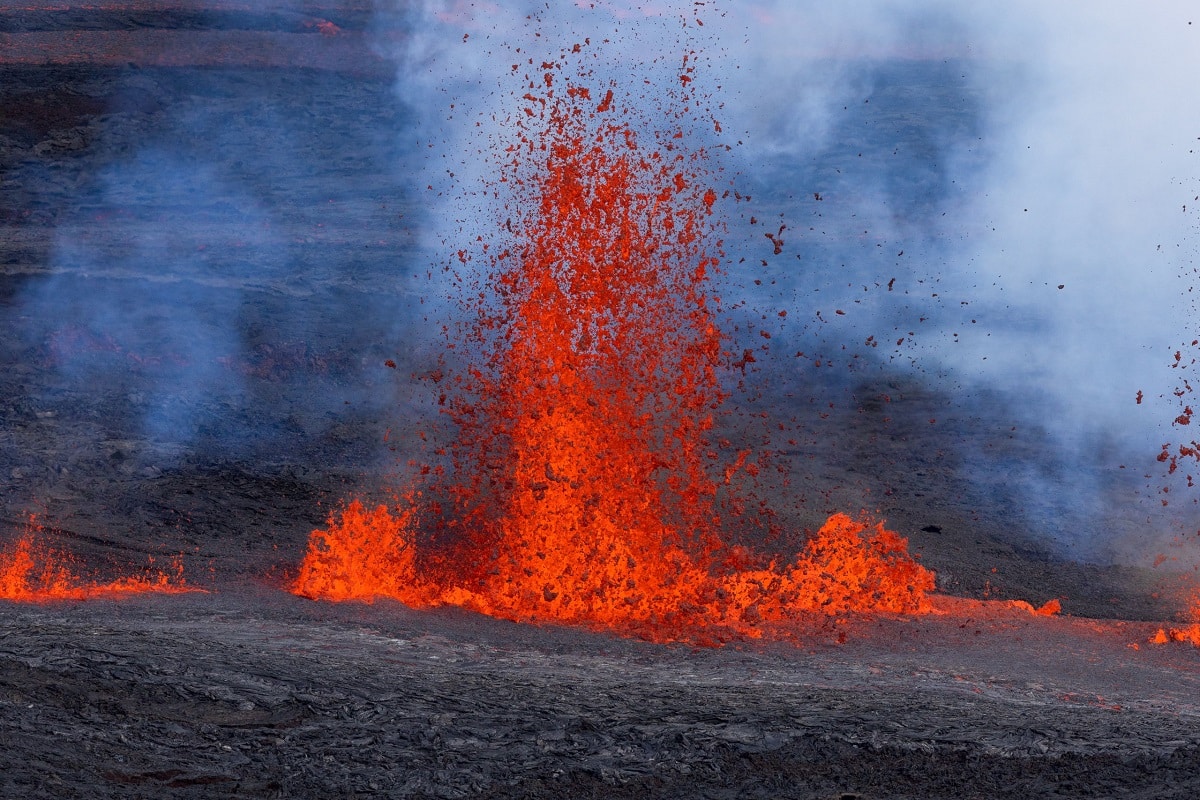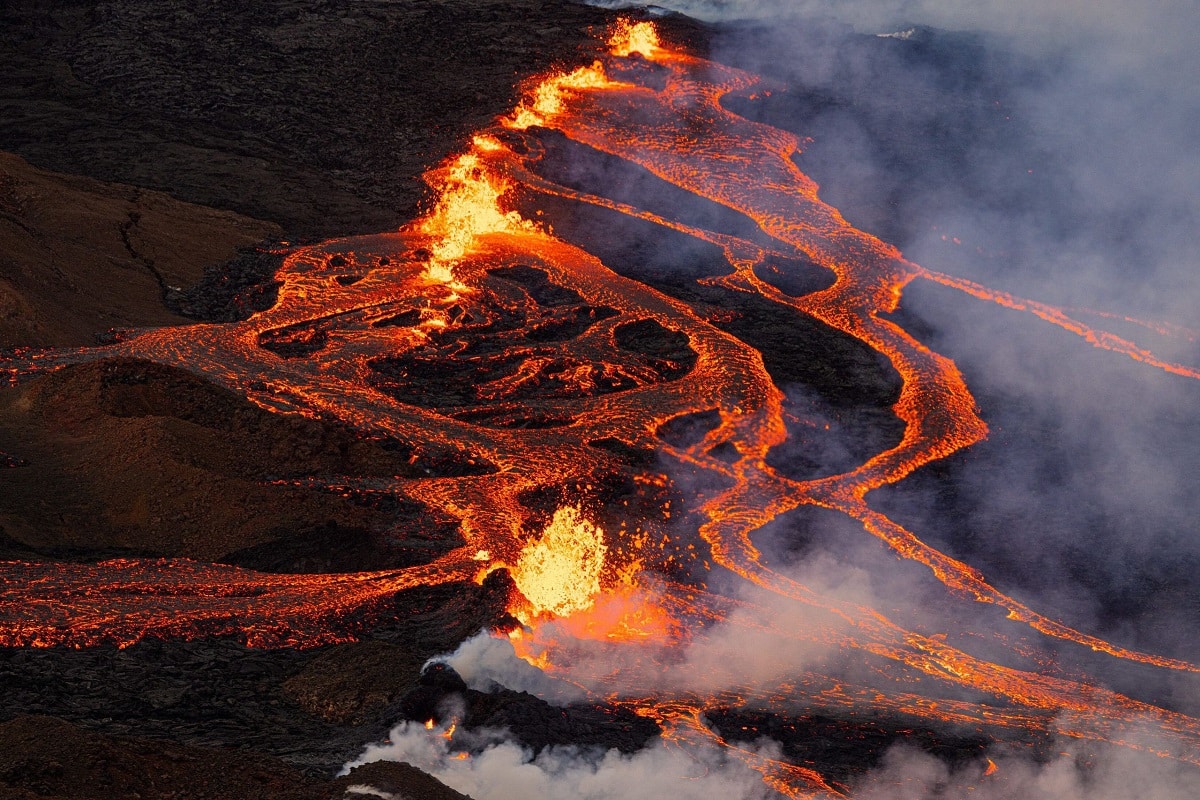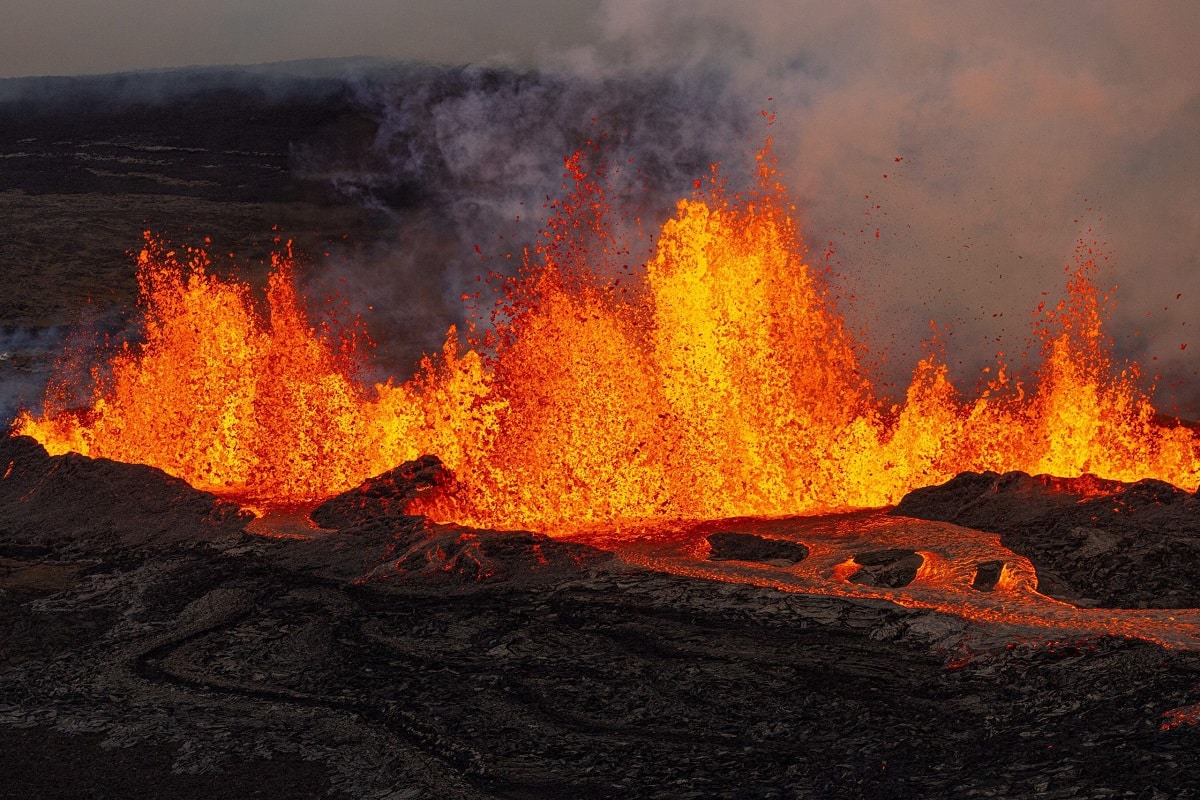
La Mauna Loa volcano eruption On the island of Hawaii last Sunday, November 27, no one was caught by surprise, since it is the largest active volcano on the planet and they are islands not even used to living with lava. However, at the top of the volcano, at an altitude of 3.400 meters, things change. The feeling of alarm is much more evident since the observatory of the volcano is located. This observatory is the world reference for measuring the atmospheric concentration of carbon dioxide, which is the main greenhouse gas that causes climate change. The question is whether the eruption of this volcano could cause alterations in the data collected by the observatory.
Therefore, in this article we are going to tell you about the data recorded and how the eruption affects climate change.
lava affection

Evacuations and power outages at the Mauna Loa Observatory following the eruption brought the center's activities to a standstill. No data has been recorded since the afternoon of Monday the 28th. “Our analytical systems and the associated gas monitoring and data acquisition equipment require power to function, so they remain idle. Even with energy, but no road access, some instruments get stuck and stopreports the Mauna Loa Observatory.
Currently, the lava flow does not put the instruments or the observatory facilities at risk. They also do not pose a threat to local populations, as they remain far from population centers. Despite this, the United States Geographic Survey maintains a red alert level for the entire island. Also, He warned that eruptions in the region are often very active and lava flows can change direction quickly.
Geoscientists say that this situation is quite worrying because the eruption is in a bad location and is large. It is thought that it will not return to normal for a few months. As the lava continued on its natural, destructive path, the team of researchers scrambled to find a safe location nearby so they could temporarily begin data measurements. It can be seen that lava has crossed the path leading to the Mauna Loa Observatory.
Global CO2 measurements

Another big question that arises after the eruption is what happens to the logs once the equipment is reset. Carbon dioxide is one of the many gases expelled by volcanoes., so it stands to reason that if the eruption had occurred so close to the date, the observatory's instruments would have detected a rapid increase in carbon dioxide, misdiagnosing the greenhouse gas in the atmosphere. “If the analytical system works correctly, it will register an increase in carbon dioxide when the wind blows from the eruption point. However, when the wind blows in other directions, the measurements will not be affected," the geoscientists have said.
In addition, if they did occur, these disturbances would be temporary and would have no effect on overall Mauna Loa Observatory measurements, which does not measure local CO2 concentrations but so-called background CO2 concentrations. Its location on top of this volcano in the middle of the ocean is precisely to avoid most of the disturbance and local sources of pollution. In addition, from the beginning it was prepared to detect changes in local emissions, such as volcanic eruptions, and make corrections to its records.
Geoscientists are more interested in measuring background CO2 concentrations on Mauna Loa, where they can see the effects of greenhouse gas emissions thousands of kilometers from the observatory. In the case of local sources of emissions, such as volcanic eruptions, it is easy to detect deviations in the measurements based on wind direction. In fact, that's what they did during the 1984 eruption.
And, beyond the observatory's measurements, what is the potential for this eruption to increase global concentrations of CO2 in the atmosphere? After all, The planet has warmed by almost 1,3ºC since pre-industrial times, of which 0,75ºC is due to carbon dioxide. Geoscientists claim that It won't affect almost anything.
Similarly, the palm researcher Omaira García Rodríguez explained that "at a local or regional scale, and in very short periods of time, the observed CO2 concentration can vary significantly due to the impact of volcanic emissions", however, "the emissions of CO2 and like all eruptive processes in general, this type of volcano is insignificant in the global balance”.
I hope that with this information you can learn more about the Mauna Loa eruption and its carbon dioxide emissions.